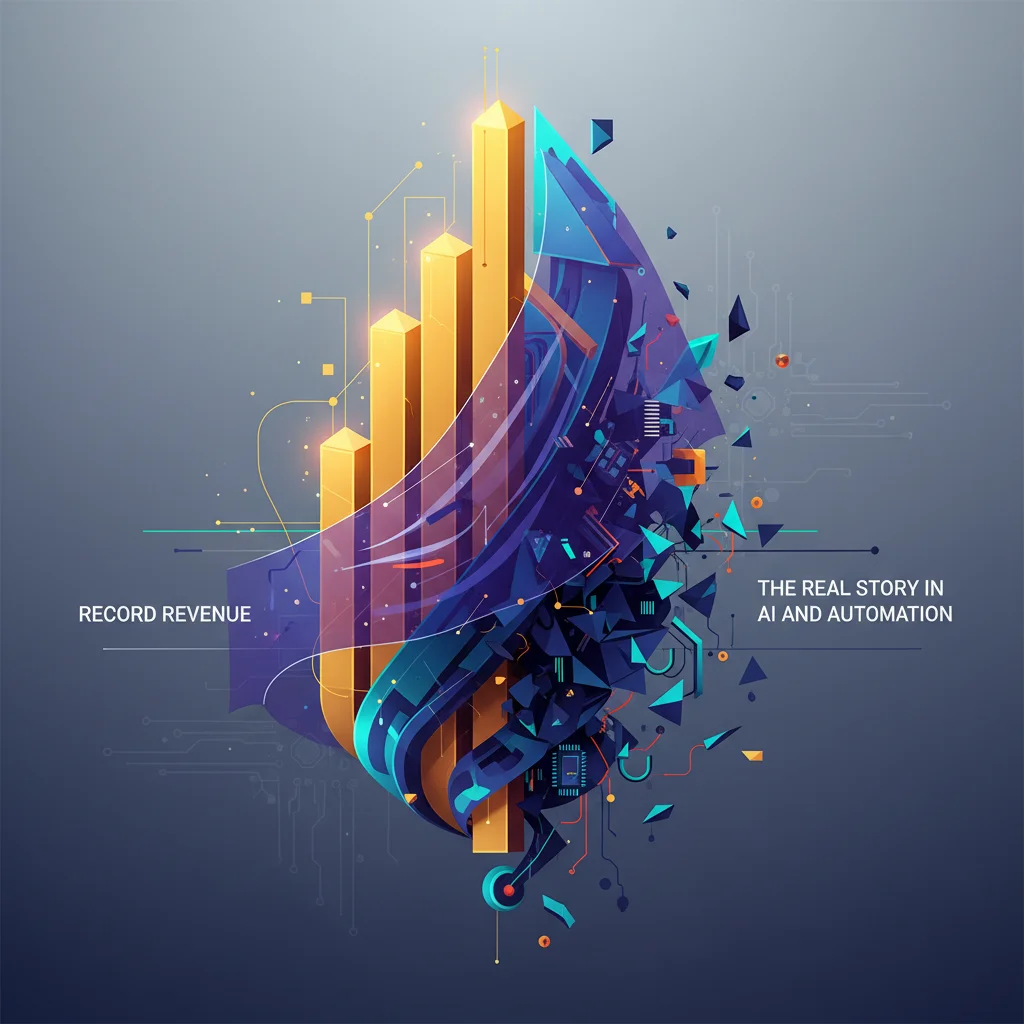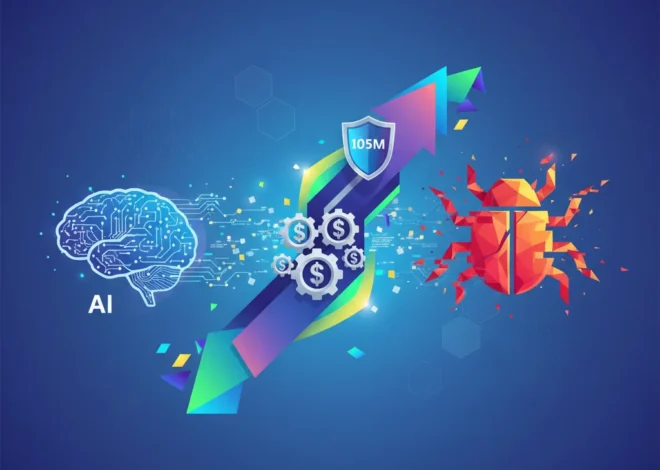
Tesla’s Paradox: Why Record Revenue Can’t Mask the Real Story in AI and Automation
The Curious Case of Tesla’s Sliding Profits
On the surface, it looked like another blockbuster quarter for Elon Musk’s electric vehicle empire. Tesla reported record-breaking revenue, a figure buoyed by a frantic rush of US buyers eager to lock in a key tax credit before it expired. Cars were flying out of the showrooms. The factories were humming. By all traditional metrics of sales volume, it was a resounding success. And yet, when Wall Street analysts peeled back the layers, the story wasn’t quite so rosy. Profits had slid. Margins were squeezed. The stock took a hit.
This is the great Tesla paradox. How can a company sell more products than ever before and still see its profitability decline? The easy answer, and the one most headlines ran with, points to a series of aggressive price cuts designed to spur demand and outmaneuver a growing field of competitors. While that’s true, it’s only a fraction of the story. To truly understand what’s happening at Tesla, you have to stop thinking of it as just a car company. Instead, you need to see it for what it truly is: a high-stakes, multi-billion dollar startup betting its entire future on artificial intelligence, automation, and a software-defined world.
The recent earnings report isn’t a sign of failure; it’s a calculated move in a much larger game. It’s a story that has profound implications not just for the auto industry, but for developers, tech professionals, and entrepreneurs who are watching one of the world’s most audacious experiments in real-time innovation unfold.
Deconstructing the Dollars and Cents
Before we dive into the world of neural networks and robotic assembly lines, let’s break down the numbers. A financial report can tell a compelling story if you know where to look. The disconnect between revenue (the total money coming in) and net income (the profit left after all expenses) is where the plot thickens.
To put it in perspective, let’s compare the final quarter of 2023 with the same period in the previous year. While the top-line revenue grew, the all-important automotive gross margin—a key indicator of profitability per vehicle—shrank significantly.
| Metric | Q4 2022 | Q4 2023 | Analysis |
|---|---|---|---|
| Total Revenue | $24.3 Billion | $25.2 Billion | Modest growth, showing increased sales volume. |
| Net Income (GAAP) | $3.7 Billion | $7.9 Billion* | *Highly misleading due to a one-time $5.9B non-cash tax benefit. Operating income, a truer measure of performance, actually fell 47%. |
| Automotive Gross Margin | 25.9% | 17.6% | This is the key number. A dramatic drop, showing the direct impact of price cuts. (source) |
| Vehicle Deliveries | 405,278 | 484,507 | A 20% increase in deliveries, achieved through lower pricing. |
*Data sourced from Tesla’s official Q4 2023 Update. The net income figure highlights the importance of looking past headlines to operational performance.
The table above paints a clear picture: Tesla intentionally sacrificed profitability on each car sold to achieve a much higher sales volume. This wasn’t a panicked reaction; it was a strategic decision to prioritize market share and fleet growth over short-term financial gains. This is a classic Silicon Valley growth-hacking mindset applied to heavy industry, a move that makes traditional auto executives nervous and tech entrepreneurs nod in recognition.
The Billion Handshake: Why Tech Giants Are Buying the Physical 'Warehouses' of the AI Revolution
The AI Engine Driving the Strategy
So, why is expanding the fleet so critical that Tesla is willing to slash its own profits? The answer lies in data. In the world of AI and machine learning, data is the fuel. The more real-world driving data you have, the faster your algorithms can learn and improve.
Full Self-Driving (FSD): The Ultimate SaaS Play
Tesla’s FSD Beta is one of the most ambitious commercial AI projects in history. Unlike competitors who rely on pre-mapped HD environments and expensive Lidar, Tesla is pursuing a vision-based approach, using cameras and a sophisticated neural network to navigate the world. This requires an astronomical amount of training data from every conceivable road condition, weather pattern, and “edge case” scenario.
- Data Collection: Every Tesla on the road is a potential data-gatherer, feeding information back to the central cloud infrastructure. More cars mean more data, creating a powerful feedback loop.
- Software as a Service (SaaS): The goal is to solve autonomy and then sell it as a high-margin software subscription. A car’s hardware depreciates, but its software can be continuously updated and improved via over-the-air (OTA) updates, creating recurring revenue streams that are far more profitable than the initial sale. This is a fundamental shift in the automotive business model.
- Programming & Innovation: The engineering behind this involves immense challenges in real-time programming, sensor fusion, and predictive modeling, pushing the boundaries of what consumer-grade hardware can achieve.
By lowering prices, Tesla is accelerating the growth of its data-collection network, building a moat that becomes harder for competitors to cross with each new vehicle sold.
From Stun Guns to Smart Clouds: The AI-Powered Future of Taser Technology
Automation Beyond the Road: The Gigafactory and Optimus
Tesla’s obsession with automation extends far beyond the driver’s seat. Elon Musk has often said that the company’s long-term competitive advantage will be in manufacturing. The “machine that builds the machine” is a core tenet of their philosophy.
The Gigafactories are marvels of modern automation, designed to reduce complexity and cost at a massive scale. This focus on manufacturing innovation is directly tied to their AI ambitions. The same principles of vision-based AI and control systems used for FSD can be applied to factory robotics. This brings us to Optimus, Tesla’s humanoid robot project. The goal is to create a general-purpose robot that can perform repetitive or dangerous tasks in the factory, further driving down costs and increasing efficiency. This is a long-term R&D expense that weighs on current profits but holds the potential for transformative future value.
Lessons for the Tech World: From Startups to Cybersecurity
Tesla’s journey offers a fascinating case study for anyone in the technology sector. Their strategy, while controversial, is packed with valuable lessons.
For Entrepreneurs and Startups:
The core lesson is the power of a long-term vision and the willingness to endure short-term pain for an exponential long-term gain. Many startups face the classic dilemma of growth versus profitability. Tesla provides a masterclass in prioritizing market and data acquisition, betting that a dominant position will eventually lead to immense profitability. It’s a high-risk strategy that requires a strong brand, investor confidence, and an unwavering belief in the technological roadmap.
For Developers and Software Engineers:
Tesla is a software company that happens to build hardware. The challenges are immense, from building fail-safe, real-time operating systems that control a two-ton vehicle to managing a global cloud backend that processes petabytes of video data. Furthermore, the rise of the connected car has massive implications for cybersecurity. Securing a fleet of vehicles from remote attacks is a non-trivial challenge, requiring a level of security engineering on par with financial institutions or defense contractors. The OTA update mechanism itself is a potential attack vector that must be rigorously protected.
Beyond the Zap: How AI and the Cloud are Transforming the Taser
The Road Ahead: A Bumpy Ride to an Automated Future
So, what does the future hold? Tesla has explicitly warned that 2024 will see “notably lower” growth as they focus on launching their next-generation, lower-cost vehicle platform. The price wars are likely to continue, and margins will remain under pressure. The company is in a transitional period, digesting its rapid growth of the past few years while investing heavily in future technologies like the Cybertruck, the Semi, and the AI systems that underpin everything.
The story of Tesla’s sliding profits isn’t one of failure, but of a calculated, strategic investment. It’s the story of a company trading today’s dollars for tomorrow’s data, sacrificing profit margins for a dominant position in the coming age of AI-driven transportation and robotics. Whether this audacious bet will pay off remains one of the most compelling questions in the modern tech and business landscape. For now, it’s a powerful reminder that sometimes, the most important numbers aren’t the ones in the quarterly earnings report, but the ones that measure progress toward a future that is still being programmed.

